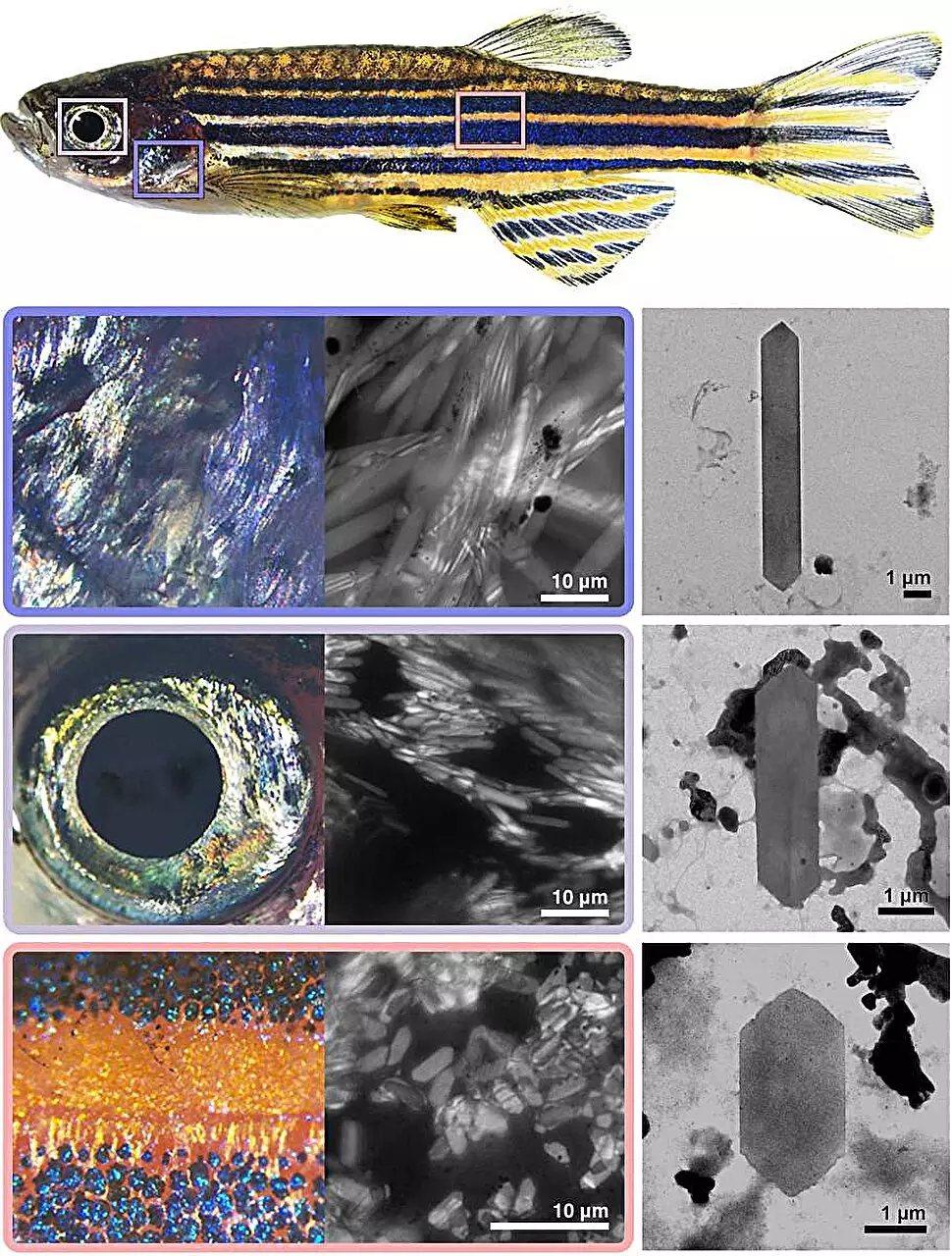Fish, chameleons, crabs, and even fictional characters like Walter White from “Breaking Bad” share an intriguing commonality—the ability to create crystals. While Walter White’s crystal-making venture revolves around illicit drug manufacturing, the crystals formed by fish and other animals serve essential biological functions such as communication, camouflage, and thermal regulation. A recent study from the Weizmann Institute of Science sheds light on how animals create a stunning variety of crystals from just two molecular components: guanine and hypoxanthine. This article delves into the fascinating findings from this research, highlighting the zebrafish as a focal point.
Among the subjects of this study, the zebrafish stands out as an extraordinary example of crystal production in the animal kingdom. Known for its vibrant appearance, the zebrafish is not only visually appealing but also a crucial research organism for understanding complex biological processes. The research team discovered that zebrafish possess various types of crystals within their body tissues, each differing in shape and optical properties. The operculum or protective cover of the gills is noted for its silvery sheen, while the eyes exhibit bluish tints and the skin flashes bright yellow or blue patterns.
Dr. Dvir Gur and his colleagues meticulously isolated these crystals to examine their distinct physical characteristics, leading to discoveries about the underlying biochemical and genetic controls governing their formation. Interestingly, their observations revealed that the crystals from different body parts differ in shape and structure—an insight that pointed to a deeper understanding of how living organisms create structural diversity from limited resources.
One of the most compelling findings of the study involves the ratios of guanine and hypoxanthine present in the crystals, akin to a baker’s choice of ingredients that creates diverse culinary delights. Just as a baker might adjust the cream-to-chocolate ratio to create a mousse or ganache, zebrafish cells modify the balance of these two molecules to yield distinct crystal types, each optimized for specific functions. The alteration in molecular ratios not only influences the physical characteristics of the crystals but also determines their application within the organism.
In controlled laboratory settings, researchers successfully synthesized three versions of zebrafish crystals, each with varying guanine and hypoxanthine ratios, thereby replicating the natural diversity observed in zebrafish. This ability to manipulate molecular ratios opens doors to understanding how biochemical processes in organisms lead to diverse physical traits in a manageable and comprehensible manner.
Further exploration into the production mechanism involved isolating iridophores—the specialized cells responsible for crystal formation in zebrafish. The research led by Ph.D. student Rachel Deis unveiled two primary yet contrasting trends: iridophores contained a high concentration of enzymes that facilitate the construction of crystal precursors while simultaneously having lower levels of other functionally similar enzymes. This intriguing balance indicates that each type of iridophore has a unique set of enzymes that help regulate the ratios of the constituent molecules, ultimately determining the physical properties of the crystals.
This balance emphasizes an essential evolutionary advantage; it allows fish to customize crystal structure according to specific environmental needs and physiological functions without disrupting other critical cellular operations. By identifying the different enzymes at play, researchers unlocked a deeper understanding of how these cells function and adapt.
To validate their findings, the research team conducted experiments where they engineered zebrafish lacking a particular enzyme, pnp4a, crucial for synthesizing crystalline guanine. The results were telling—fish without this enzyme exhibited diminished and altered crystal shapes in their eyes, aligning more closely with those found in their skin. This experiment solidified the hypothesis that a delicate balance of enzymes governs crystal formation, and any disruption in this equilibrium has significant consequences for crystal structure and function.
By unraveling the intricate mechanisms behind crystal formation in zebrafish, researchers highlighted how vastly diverse functional traits can emerge from simple molecular building blocks. The interdisciplinary collaboration among biologists, optical scientists, and biomaterials experts not only advanced scientific knowledge but also reinforced the elegance of natural processes. The insights derived from such studies hold the potential for application in materials science and bioengineering, inspiring innovations that mimic the creative solutions found within the animal kingdom.
In essence, the findings illuminate the sophisticated ways nature has evolved to utilize simple components to create complex biological functions, challenging our understanding of materials and their interactions in living organisms. Ultimately, this research serves as a testament to the intertwined relationship between biology and chemistry, revealing the wonders hidden in the microscopic world.


Leave a Reply